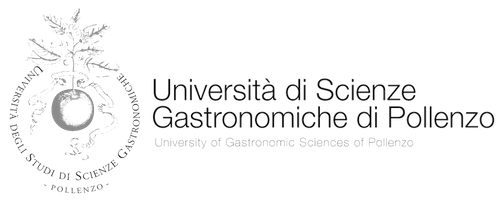Uomini e lupi
Directed by
The village of Vischio, on the slopes of the Abruzzo Apennines, like every winter is besieged by wolves that descend in packs threatening the sheepfolds. To protect the flocks, twenty thousand liras are therefore promised for each beast killed, and the reward attracts two “wolfers” to the village: Giovanni, strong with long experience, who arrives in Vischio with his wife Teresa and son Pasqualino, and Ricuccio, unbeatable in words, but in reality more gifted for hunting beautiful girls than ferocious wolves. Hired by Don Pietro, a wealthy landowner, to put leghold traps in his countryside, Ricuccio immediately begins courting his daughter Bianca, while a strong rivalry develops between him and Giovanni. After an unfortunate beginning, Giovanni, for his part, manages to trap a she-wolf: he would like to take it alive, in order to obtain the substantial reward promised by a zoological garden. But the howls of the trapped beast call out the entire pack, and Giovanni loses his life. Ricuccio, stricken by his rival's tragic end, sets out to hunt the wolves, kills one, takes it to Teresa and accompanies the dead rival's wife and child to all the neighboring towns (in fact, tradition has it that after the capture of a wolf, the wolfman tours the surrounding towns to collect gifts from the grateful inhabitants). Back in Vischio, Ricuccio prepares to run away with Bianca, who has become his lover. Don Pietro, who learns of the plan, wants to avenge his daughter's honour, but Teresa's heartfelt intervention convinces him to consent to the marriage. The winter is now over and Teresa leaves the village. But at the last moment Ricuccio, uselessly pursued by Don Pietro, reaches her: he has in fact realised that he loves her and wants to live with her and little Pasqualino.
For the filming of the film, which took place in the Abruzzo National Park, numerous wolves were imported from Siberia, which later died, even though they were entrusted to the care of Angelo Lombardi, the future presenter of the well-known programme “L'amico degli animali” (the friend of the animals).
Dear Aristarco, The Wolves is about to be released, a film that in the credits and in all advertising, the associated production companies Titanus-Trionfalcine, present with my signature. I consider it my duty to bring to your attention that, in reality, the edition of the film that you will see was prepared and edited in its entirety by Titanus, by technicians whom I do not even know, and not by me personally, as the presence of my name in the film would suggest. [...] Titanus - although divided in this by its associate Trionfalcine - asked me, before allowing me to proceed with the dubbing, to reduce the length of the film to 2,800 metres, claiming that my editing was in many parts slow and unspectacular. I refused to make the requested cuts, having, among other things, already sacrificed some important scenes in the film to reach the 3,300 metre length. [...] My good reasons, unfortunately, did not persuade Titanus who wanted to reduce the footage at all costs, hiding behind a clause in my directing contract, according to which I was obliged to respect this last length. I decided, then, to abandon the work on the film, amicably and in good agreement with Titanus, considering myself sincerely incapable of making any other cuts to my version, not wanting - through an inevitable long controversy, private or judicial - to cause delays to the release of the film, aware of the great economic effort the producers faced, and taking into account, above all, the serious situation in which our cinema currently finds itself.
It so happened that the final editing of The Wolves, its dubbing, music and ‘mixage’, were taken care of completely outside of my direct - or indirect - responsibility. I therefore do not know the release of the film as it will be programmed. I hope, however, that the work of the technicians who replaced me will be better than mine, and that the film will be a good success. In any case, the merits, or demerits, will not be entirely mine.
(Giuseppe De Santis, ‘Cinema Nuovo’, no. 100, 15 February 1957, in Rosso fuoco. II cinema di Giuseppe De Santis, edited by Sergio Toffetti, Lindau, Turin 1997, p. 397)
In-depth analysis
About the Movie The Wolves
«That De Santis has his good reasons for complaining is something we do not doubt. But that De Santis often acts on impulse is a fact with which we are familiar. [...] Of all post-war Italian directors, De Santis is certainly the most obstinate, the most stubborn in his loyalty to his themes. [...] His subjects do not suggest conflicts, class struggles: they even impose them as inevitable facts, as cinema's only reason for living. His message is forthright, we do not doubt it, but it is also of a simplicity that borders on naivety. And yet, it is precisely in this stubbornness that we see the remarkable merits and not inconsiderable flaws of a director who deserves far more attention than he is accorded today.
After having seen The Wolves in the only possible edition, i.e. with the cuts complained of by the director, the opinion that the best De Santis, the most genuine, is precisely that of the films without excessive polemical concerns, is strengthened. And at the same time, a curious conviction arises: that the cuts inflicted by the producers on the film, in order to lighten it for commercial needs, were extremely healthy. To speak with a full conscience, we would have to see the whole film, De Santis will tell us. It is probable. But it is likely, on the other hand, that the comparison cannot entirely persuade us. When the ‘coming soon’ of The Wolves appeared on the screen a week ago, those few metres of film contained exactly everything that De Santis had for years crammed into his films, ad nauseum, all the folkloric predilections of the director from Ciociaria, all the weaknesses of this man of cinema who in other ways deserves attention and great consideration. [...] Now, in the definitive edition of The Wolves, the overload has disappeared. The film has been reduced to the pure and simple story of two wolves, who have come to Vischio, in the mountains of Marsica, in Abruzzo, to hunt down the terrible beasts that come down to the valley in winter to look for food. [...] For the rest, the plot offers stories of love and hunting; moments of high and well-paced tension; moments of moving tenderness. The providential dryness, provided in part, in our view, by the cuts that the director considers prodigious, brings out De Santis's truest qualities; among these is the ‘sentiment’ that here never descends into sentimentality.
Flaws? Some, certainly, due, as chance would have it, to an excess of elaboration [...]. But there are also many merits: an excellent series of shots in the village between Pescasseroli and Scanno, the good acting of Pedro Armendariz, Silvana Mangano and Yves Montand [...]; and the sequences of the ambushes in the woods. One scene is particularly striking: the arrival of Montand, Mangano and the baby in the village abandoned after the earthquake. A special mention goes to Portalupi's photography, who, especially in the ‘exteriors’, used colour and cinemascope with rare mastery.
The balance of The Wolves, the film that the director does not want to acknowledge as his own, comes out, paradoxically, as entirely positive. It is only to be hoped that De Santis, having calmed his nerves, will consider the ‘massacre’ carried out by the producers as a pure and simple ‘editing collaboration’, and will restore his signature to a work that we, in spite of circular letters and press statements, consider essentially his». (Franco Berutti, ‘De Santis fra i lupi’, ‘Settimo giorno’, 2 March 1957, in Rosso fuoco. Il cinema di Giuseppe De Santis, edited by Sergio Toffetti, Lindau, Turin 1997, pp. 397-398)
Notes on wolf selection by Carlo Gubetti
The wolf has recently made its spontaneous reappearance in the Western Alps. The return of this large predator restores an important balance factor to the ecosystem and indicates an overall improvement in the area's conditions, but above all it highlights the environment's ability to regenerate itself autonomously as soon as man leaves room for the development of free natural dynamics. In fact, the return of the wolf represents a happy episode that was in no way planned or favoured by direct human intervention. A happy episode that we can all rejoice in: even if very few will have the adventure of seeing a wolf in the wild, going into a forest knowing that you are sharing space with a wild presence, the bearer of an absolutely different diversity, in fact gives those places a fascination and a wealth of stimuli that we had forgotten. And this is because, in addition to the environmental aspects, the wolf also involves an emotional and cultural level, testified to by its presence in legends, myths and in artistic and cultural productions throughout the ages.
Relations between man and this species are in fact very complex and date back to a period long before the establishment of close relationships with other animals. The earliest tribal hunter-gatherer communities developed a strong sense of respect and identification with wolves, skilled hunters whose behaviour – complex social relationships, cooperation in hunting and rearing cubs – was remarkably similar to that of human societies. This admiration gave rise to forms of worship and magical-initiative rituals that became established in various geographical areas, and that in many primitive populations have survived until recent times. The wolf is in fact the totemic animal of many American Indian tribes as well as in many shamanic cults of Central Asia and Siberia. But with the prevalence of shepherds' societies characterised by rigid patriarchal structures, dualistic forms of thought took over: on the one hand man with his herds and the land cleared and transformed into pastures, the first cities and the new anthropomorphic deities; on the other hand the “outside”, the wilderness to be subjugated and exploited, the ancient deities and the wolves, no longer admired hunters, but feared predators of the flocks. This process came to fruition with the rise of the Christian religion, which adopted the single, male god of the warrior-shepherd tribes of Palestine and turned previous forms of worship upside down, demonising the pre-existing rites and deities. From the totemic animal par excellence – the progenitor of mankind and into which the shaman or sorcerer would transform himself in order to come into contact with the sphere of the divine – thus arose the figure of the demonic wolf, the one who would become the werewolf, the man capable of transforming himself into an animal and vice versa. The effects of this demonisation were felt again heavily in the 16th and 17th centuries, when thousands of witches and werewolves were burnt by the Inquisition.
From cult object to demonic creature, thus originates that ambivalence of conflicting passions, of love and hate, that connotes the presence of the wolf also in cinema. Already in Stuart Walker's Werewolf of London (1935) the protagonist is driven by the irrepressible impulse to kill the people he loves most. From the world of wolves echoes a sort of call of the primordial forest that addresses the wolf within us with the powerful seduction to seek the immediate satisfaction of instinctual drives. This is the basic outline of the long series of films about the wolf-man (between horror and horror parody), in which the protagonist yearns to live by following his passions, but is inexorably condemned to defeat (an emblematic title in this sense is Terence Fischer's The Curse of the Werewolf, 1961). A different outcome occurs with Wolf by Mike Nichols in which the wolf-Nicholson positively asserts his animality. Like the shamans of yesteryear, Nicholson acquires the qualities that the totemic species possesses to a great extent, but these remain subject to his will – if not to his control as a rational being – which makes a positive outcome possible: the wolf-Nicholson does not repress his passions, destroys those who betray him and loves with all his enhanced faculties. But the wolf does not limit his presence to horror films, and makes his forays across all genres, as shown by the selection of works presented in Panorama [Cinemambiente 1998], which includes documentaries, feature films and cartoons.
Even in the classic American cartoons of the 1930s and 1940s, apparently light-hearted and amusing, the wolf's drive component emerges: from Disney to Tex Avery the wolf gives expression to every strong and violent feeling, it is a wolf that «moves like a madman out of hunger not only for food, but above all for sex», as Marco Giusti says in the presentation of his Bloobcartoon Lupi. A losing but not defeated character, always vital in chasing the escape lines of desire.
In The Wolves (1956) by Giuseppe De Santis, the concept of the wolf emerges in the pastoral culture of a village in the Marsica region: the focus here is on the social dynamics and values of the rural tradition, in which the figure of the "luparo" emerges as an authoritative character respected by the entire community.
Lastly, Andreas Moser's documentary Wenn der Wolf kommt (1997) introduces us to the wolf animal immersed in the beautiful landscape of the Tuscan hills, offering some unusual footage – who would have imagined that wolves, in addition to children and Little Red Riding Hoods, eat apples? Even in this wolf in the flesh we can recognise the wolf in us, cases like the wolves of Disney, Freleng, Tashlin, Nichols, Jones, Giusti and Avery.
The return of the wolf by Franco Mari and Cristina Del Corso
«He is cunning, cautious, bloodthirsty and fierce, and he undermines the big game all the way to the place where it is lodged. He then assaults it by the throat and in a moment kills and devours it. When it is not hungry it is rather timid and cowardly». This image of the wolf is taken from a scientific text from the first decades of this century and reflects the attitude toward this animal that has been passed down over time through fables and tales.
This atavistic fear combined with the fact that it was considered “noxious”, in that it took wild prey from humans and harmed their flocks, translated in reality into a continuous and methodical extermination of the wolf in the territory. Slashings, guns and poisoned baits have brought this species to the threshold of extinction. While in the last century the wolf was present throughout the country, excluding Sardinia, by the early 20th century it had already disappeared from the Alpine arc, where the last certain killing occurred in 1921 in the Maritime Alps. In 1950 wolves also eliminated it permanently from Sicily: this decrease in numbers and distribution continued until the late 1960s, when the species numbered no more than a hundred individuals, perched in the wildest areas of the central-southern Apennines. In addition to direct persecution, these last specimens had to survive in an environment where the populations of deer, roe deer and wild boar, their potential prey, were now extremely small and there was still some human exploitation of the mountain territory.
Scientific studies conducted in recent years have brought out the true nature of the wolf and its fundamental role in ecosystem conservation. It has proven to be an intelligent animal with complex social relationships and a pack organized according to a precise structure, which maintains and defends its own territory. Within it there are two different hierarchical lines, one male and one female, each dominated by the higher-ranking individual, alpha male and alpha female, who impose themselves on their respective subordinates through ritualized behaviors that tend to limit the aggression existing between members of the herd. The formation of stable hierarchical relationships is important for reproduction; in fact, only the dominant male and female breed, and only once a year. This guarantees the herd the best litter genetically and a kind of self-regulation of births aimed at preventing excessive density of the species. Indeed, carnivores, unlike herbivores, are generally distributed with few individuals over vast territories. But how can this birth control take place on a practical level? How is it possible that with all females in oestrus only one mating occurs? To answer this, one must reason in terms of “sexual preferences”: in years of observations in the Abruzzo Park wildlife area, it has been observed that the courtship of males is directed exclusively toward the best female, and vice versa for females. And the alpha male obviously vigorously represses any attempt to court the alpha female by other males.
All this takes place in March, and between late May and early June the alpha female gives birth to 2 to 7 cubs. However, it is the entire pack that takes charge of their development, bringing the cubs the necessary food until they are able to take part in hunting. They are able to adopt and elaborate different hunting strategies depending on the prey and the situation, this reveals their intelligence and brings out the fundamental role that the wolf plays in maintaining the balance of the environment. Having identified potential prey, a series of attacks is used to isolate the weakest individual (usually elderly or sick animals), on which attacks are then focused. In this way the wolf performs a positive action of selection of the prey population, favoring the survival of the strongest and at the same time preventing the spread of disease. It also prevents the excessive increase of herbivores, which, if not restricted, would end up damaging the forest by preventing its development and regeneration, with serious damage to the ecosystem.
Studies conducted in Italy since the 1970s have revealed a wolf that, due to lack of prey, had to adapt to feeding on garbage and avoided any possible contact with humans, thus disproving beliefs about its supposed dangerousness. Howling then has no threatening meaning, as is often believed, but is simply one of the communication systems that wolves use to signal their presence and possession of territory to other individuals of the species. This feature is exploited by researchers to verify their presence and consistency in an area, through a technique called wolf-howling, recorded howls are emitted, thus stimulating the response of any wolves present.
Thanks to the knowledge about the wolf's ecology and behavior that has emerged from these studies and a targeted press campaign, its image has been reevaluated. This, together with the spread of a new ecological consciousness throughout the country, led to the nationwide wolf protection decree in 1971. During that period, the gradual abandonment of the mountains by humans returned large areas to wildlife, which began to increase in numbers and distribution, thanks in part to the releases of deer, roe deer and wild boar by humans for hunting and restocking purposes. The combination of these factors has resulted in a favorable condition for the survival of the wolf population, which can now begin to increase and expand again throughout the Apennines. In the 1980s the wolf's presence was consolidated in the Ligurian Apennines, in 1990 a specimen was sighted in the Alta Valle Pesio Park in Piedmont, and in 1992 the first sighting of two specimens was made in the Mercantour National Park in France. Meanwhile in the Eastern Alps, specimens are reported in Slovenia near the Italian border. Currently some animals are present in the province of Cuneo in the Upper Pesio Valley Park and the Stura Valley, probably roaming between France and Italy, and in the province of Turin in the upper Chisone and Susa valleys. Monitoring wolves is extremely difficult: researchers, parks, universities, regions and provinces are engaged in study projects to arrive at the best management strategies compatible with both protecting the species and safeguarding human activities such as pastoralism.
Now the public wants to know more about this predator and its whole world, hence the proliferation of articles in the press, its new role in cinema (how can we not remember “Two Socks” from Dances with Wolves!) and documentaries broadcast in numerous television programs dealing with nature. There is, however, an inaccuracy to be pointed out regarding the latter: mostly splendid films with spectacular images are offered, but they are made mainly in North America, while those shot in Italy are rare. In this way, a reality quite different from the Italian one is communicated, in which, with few exceptions, there are no conditions of prey and territory suitable for the formation of large herds like those filmed in North America. In Italy the flock is generally formed by the pair with the young that, if food availability permits, remain with their parents, otherwise they are forced to move away in search of new territories. The availability of new territories will lead to a further increase in the population, which is currently estimated at around 500 individuals.
However, it should not be forgotten that this return may cause problems for breeders, who should not be the only ones to take on this presence. That is why, while it is important that there be, from all parties involved, maximum cooperation to identify and activate all measures to prevent possible damage to livestock, it is the whole community that must take charge of the different aspects of this phenomenon.
We have on loan this world for our children, and among our tasks is to make sure that, while respecting everyone's interests, they too can one day listen to the howling of wolves on winter nights.
Franco Mari and Cristina Del Corso are researchers involved in the project on wolf monitoring in the province of Cuneo.







